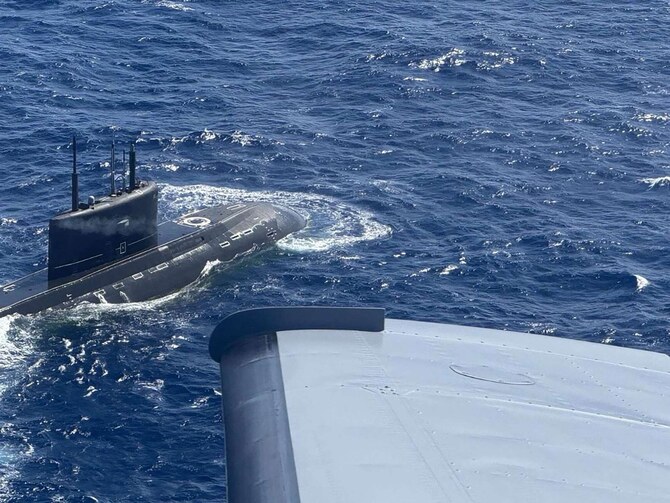Last week, the Philippine military responded to a situation in the South China Sea that sparked alarm within the country. A Russian submarine passed through the Philippine exclusive economic zone (EEZ), located off the western coast of the Philippines, which led to the deployment of a Philippine Navy ship and Air Force aircraft to monitor the submarine’s movements.
Submarine’s Passage Triggers Philippine Concerns
The Philippine authorities had made contact with the submarine via two-way radio, and the crew identified the vessel as a Russian submarine. They informed the Philippine Navy that they were returning home to Vladivostok, a city located in eastern Russia. The submarine had been participating in an exercise with the Malaysian navy before continuing its journey. Despite being in the Philippines’ EEZ, the Russian submarine was exercising its right to “innocent passage,” a principle under international law that allows foreign ships to pass through another country’s EEZ as long as they do not threaten the security or interests of the coastal state.
The submarine’s presence still raised concerns, especially because it surfaced due to weather conditions and was spotted near the Philippine province of Mindoro, about 80 nautical miles (148 kilometers) from the coast. The Philippine authorities acknowledged that, while the submarine had the right to pass through the EEZ, its presence raised important security questions, especially considering the ongoing tensions in the South China Sea.
Increased Submarine’s Surveillance in the South China Sea
The situation comes amid growing territorial disputes in the South China Sea, a region that is of strategic importance to many countries. The Philippines, along with other nations like Vietnam and Malaysia, has faced increasing challenges from China, which claims almost the entire South China Sea as its territory. This vast area is rich in resources and plays a vital role in global trade, which has made it a hotspot for territorial disputes over the years.
In recent months, tensions have escalated in the region, particularly between Chinese and Philippine naval and coast guard forces. These confrontations have been a cause of concern for neighboring countries and have led to heightened surveillance from the United States and other Western powers who are also watching closely due to the importance of the sea lanes in the South China Sea.
The appearance of the Russian submarine’s presence further complicates the situation. While the submarine’s passage was in the Philippines’ EEZ, it was still subject to international laws and regulations that govern the passage of foreign vessels. However, the presence of a foreign military submarine’s movements, especially one from a nation outside the region, can be seen as a potential threat to national security, which is why the Philippine authorities took action.
Harassment of Filipino Fishermen by Chinese Helicopter
The tensions in the South China Sea also involved a separate incident last week, in which a Chinese military helicopter flew dangerously close to Filipino fishing boats operating in the region. The Philippines Coast Guard described the action as a “dangerous act of harassment” as the helicopter reportedly hovered over Filipino fishermen in the Iroquois Reef area, a disputed fishing zone in the South China Sea. The incident further heightened concerns over the safety of Filipino fishermen and the increasing presence of foreign military forces in the area.
In response to the Chinese helicopter’s actions, the Philippine Coast Guard deployed two of its patrol ships to the area. The Philippine Coast Guard tasked these ships with protecting Filipino fishermen who rely on the rich fishing grounds in the South China Sea. Several countries, including China, have long contested this area due to overlapping territorial claims and have been accused of imposing restrictions on fishing activities by other nations in the region.
Ongoing Tensions in the South China Sea
While the Chinese government has not commented on the incident, the Philippines continues to closely monitor the situation in the South China Sea, where incidents of this nature are becoming more frequent. The Philippines sees the presence of foreign military forces and the harassment of Filipino fishermen as critical issues that need addressing to ensure the safety and security of its interests in the region.
The South China Sea remains one of the most contested areas in the world, with several countries claiming parts of the sea and its surrounding waters. The Philippines, like other nations in the region, faces the challenge of asserting its territorial rights while maintaining peaceful relations with other countries involved in the dispute. As such incidents continue to unfold, they serve as a reminder of the growing tensions and the complex nature of territorial disputes in the South China Sea.

